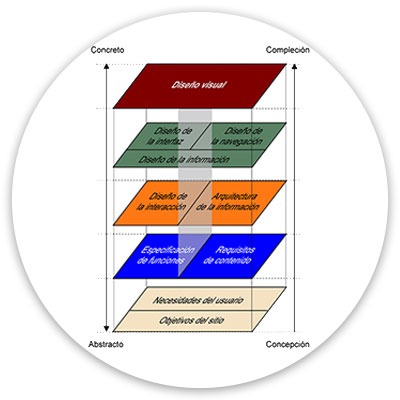User experience design for knowledge transfer in virtual reality environments
DOI:
https://doi.org/10.24310/idiseo.18.2023.17453Keywords:
Diseño, Experiencia de Usuario, Realidad Virtual, Transferencia de Conocimientos., Design, User Experience, Virtual Reality, Knowledge Transfer.Abstract
Virtual reality allows the user to access varied experiences in safe and risk-free environments, based on recreational activities, which has a positive impact as a tool in the transmission of knowledge aimed at people who interact in these digital environments. The objective of this article is to determine and identify ergonomic design aspects that positively stimulate the user experience in virtual reality environments for the transfer of sustainable knowledge in a simple and contextualized way.
The theoretical-methodological documentation addresses areas of knowledge that interact with each other, such as: information architecture, digital ergonomics, emotional design, and interaction. Three case studies of free downloadable virtual reality tools available in Mexico were selected for analysis: Google Cardboard, InMind2, and VR Video World. The collection of information from each platform was carried out from an ethnographic documentation of four qualitative tools: user profiles, user journey, bipolar laddering usability test, and cardshorting.
The result obtained is a user experience design proposal for virtual reality environments that integrates an architecture based on four levels: strategy, structure, scheme and surface, under an approach that promotes information related to the daily habits of users, as well as such as the detection of ergonomic aspects that can be improved from the design area.
Downloads
Metrics
Publication Facts
Reviewer profiles N/A
Author statements
Indexed in
-
—
- Academic society
- N/A
- Publisher
- Universidad de Málaga
References
Baidrillard, J. (1987). Cultura y Sociedad. Barcelona: Editorial Kairós.
Batthyany, K., & Cabrera, M. (2015). Metodología de la investigación en Ciencias Sociales. España: Litu.
Brundtland, H. (1987). Desarrollo y Cooperacion Economica Internaciona: Medio Ambiente.
Churches, A. (2013). Taxonomía de Bloom para la Era Digital. REDuteka.
Etzkowitza, H. (2000). The future of the university and the university of the future: evolution of ivory tower to entrepreneurial paradigm. Research Policy, 313-330.
Foladori, G. (2002). Avances y límites de la sustentabilidad social. Economía, Sociedad y Territorio Vol III, 621-637.
Folmer, E., & Bosch, J. (2004). Architecting for usability. Departament of Mathematics and Computing Science, 70, 61-78. https://doi.org/https://doi.org/10.1016/S0164-1212(02)00159-0
Garrett, J. J. (2002). Elements of User Experience: User - Centered Design for the Web. California: New Riders. https://blog.beplan.cl/los-elementos-de-la-experiencia-de-usuario/
Gentner, D., & Stevens, A. L. (2014). Mental Models (Primera ed.). New York: Psychology Press.
Guerrero, M. (2012). Tranferencia de Conocimiento y Tecnología. Gestión y Política Pública, 107-139.
Luhmann, N. (2006). La sociedad de la sociedad. Frankfurt: Herder.
Major, E., & Corder-Hayes, M. (2000). Knowledge translation: a new perspective on knowledge transfer and foresight. Foresight, 2(4), 411-423. https://doi.org/https://doi.org/10.1108/14636680010802762
Montoya, M. I. (2018). Realidad Virtual, aumentada y Mixta en propuestas audiovisuales de Ficción y no Ficción. Narrativas Inmersivas para Cominicadores, 7-12. https://doi.org/DOI: http://dx.doi.org/10.18566/comunica.n39.a01
Nielsen, J. (1990). Heuristic Evaluation of User Interfaces. CHI Proceedings, 249-255.
Nielsen, J. (08 de 08 de 2019). Nielsen Norman Group. https://www.nngroup.com/articles/powers-of-10-time-scales-in-ux/
Nielsen, J., & Mack, R. L. (1994). Usability Inspection Methods. New York: John Wiley & Sons.
Norman, D. (2013). Emotional Design: why we love (or hate) everiday things. New York: Basics Books.
Norman, D. (2014). jnd.org. Retrieved 18 de 12 de 2019, from https://jnd.org/error_messages_are_evil/
Pérez, Z. R. (2018). La sociedad del conocimiento y la sociedad de la información como la piedra angular en la innovación tecnológica educativa. Revista Iberoamericana para la investigación y el Desarrollo Educativo, 8(16), 847-870. https://doi.org/https://doi.org/10.23913/ride.v8i16.371
Prieto, G. Á. (2023). E- innova BUCM. http://biblioteca.ucm.es/revcul/e-learning-innova/27/art1263.pdf
RAE. (17 de 04 de 2023). Real Academia Española. http://lema.rae.es/drae2001/srv/search?id=VERUpzUOADXX2PQkV704
Rubio, T. J., & Gertrudix, B. M. (2016). Realidad Virtual (HMD) e Interacción desde la perspectiva de la construcción narrativa y la comunicación:propuesta Taxonómica. Icono 14, 1-24. https://doi.org/https://doi.org/10.7195/ri14.v14i2.965
Serrano, A., & Martinez, E. (2003). La Brecha Digital Mitos y Realidades. Baja California: Editorial Universitaria de la Universidad Autónoma de Baja California. https://doi.org/ISBN 970-9051-89X
Tamayo, M. T. (2003). El proceso de la investigación científica (4 ed.). México: Limusa.
Tractinsky, N., & Katz, A. S. (2000). What is beatiful is usable. Interacting with Computers, 13(2), 127-145. https://doi.org/https://doi.org/10.1016/S0953-5438(00)00031-X

Downloads
Published
How to Cite
Issue
Section
License
Copyright (c) 2023 Nancy Yeraldi González Hernández, Ricardo Victoria-Uribe

This work is licensed under a Creative Commons Attribution-NonCommercial-NoDerivatives 4.0 International License.
Aquellos autores/as que tengan publicaciones con esta revista, aceptan los términos siguientes:- Los autores/as conservarán sus derechos de autor y garantizarán a la revista el derecho de primera publicación de su obra, el cuál estará simultáneamente sujeto a la Licencia de reconocimiento de Creative Commons que permite a terceros compartir la obra siempre que se indique su autor y su primera publicación esta revista.
- Los autores/as podrán adoptar otros acuerdos de licencia no exclusiva de distribución de la versión de la obra publicada (p. ej.: depositarla en un archivo telemático institucional o publicarla en un volumen monográfico) siempre que se indique la publicación inicial en esta revista.
- Se permite y recomienda a los autores/as difundir su obra a través de Internet (p. ej.: en archivos telemáticos institucionales o en su página web) antes y durante el proceso de envío, lo cual puede producir intercambios interesantes y aumentar las citas de la obra publicada. (Véase El efecto del acceso abierto).







14.png)



